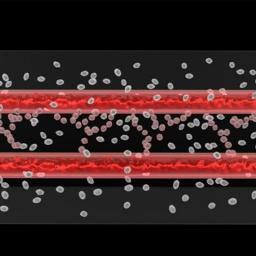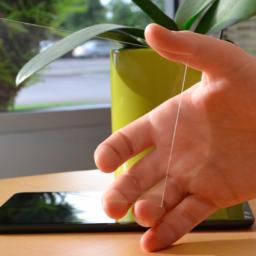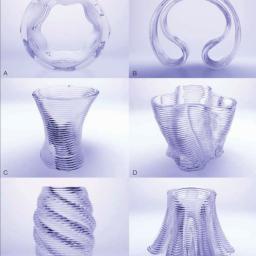Combining biological components, such as cells and tissues, with soft robotics can enable the fabrication of biological machines with the ability to sense, process signals, and produce force. Engineers at the University of Illinois are working on developing a Bio-Robot which can be produced easily by using 3D printing technology. They developed similar bio-bots few years back, but that time they used heart cells. Now they find a way to use muscle cells to gain more control. The frequency of the electric field determines the speed of this bio-bot.
https://www.youtube.com/watch?v=F6SUbHn4yg4&list=PLK2ccNIJVPpC7ny_lpawhue_k3pfwqTQ2Paul Eremenko, the head of Project Ara showed the prototype of Project Ara at Google I/O 2014.
Though the phone failed to fully load, Audience cheered on seeing the Android bootup screen.
Project Ara is the codename for an initiative by Google that aims to develop a free, open hardware platform for creating highly modular smartphones.
https://www.youtube.com/watch?v=0He3Jr-fZh0&list=PLK2ccNIJVPpBKf0ko0817k_fjKZzWwcQWThe Chinese smartphone company Huawei has unveiled their new quick charging lithium-ion batteries at the 56th Battery Symposium in Japan. Using next generation technology, these new batteries have achieved a charging speed 10 times faster than that of normal batteries, reaching about 50% capacity in mere minutes.
Huawei presented videos of the two types of quick charging lithium-ion batteries: one battery with a 600 mAh capacity that can be charged to 68% capacity in two minutes; and another with a 3000 mAh capacity which can be charged to 48% capacity in five minutes to allow ten hours of phone call on Huawei mobile phones.
http://www.csmonitor.com/Technology/2015/1116/Quick-charge-battery-could-charge-smartphone-10-times-fasterLi-Fi is a new method of delivering data. It uses the visible spectrum rather than radio waves. For the first time, this new technology has been tested in a working office. Li-Fi is a wireless technology that transmits high-speed data using visible light communication. The Li-Fi system uses standard light-emitting diodes (LEDs) to transmit electronic data signals, which will enable users to access the internet through the ordinary lighting systems in schools, workplaces and homes.
With scientists achieving speeds of 224 gigabits per second in the lab using Li-Fi earlier this year, the potential for this technology is huge. And now, scientists have taken Li-Fi out of the lab for the first time, trialling it in offices and industrial environments in Tallinn, Estonia, reporting that they can achieve data transmission at 1 GB per second - that's 100 times faster than current average Wi-Fi speeds.
The technology uses Visible Light Communication (VLC), a medium that uses visible light between 400 and 800 terahertz (THz). It works basically like an incredibly advanced form of Morse code - just like switching a torch on and off according to a certain pattern can relay a secret message, flicking an LED on and off at extreme speeds can be used to write and transmit things in binary code. The flickering of light is too fast for humans to notice.
http://www.bbc.com/news/technology-34942685
Blood vessels are vital parts of the body's circulatory system that supply the organs with nutrients and remove waste. Scientists have developed artificial tissue from the heart, liver and lungs, but creating a synthetic network of blood vessels to support these organs has been a challenge. Scientists from the Universities of Sydney, Harvard, Stanford and MIT have been working together to overcome this challenge. Now, the researchers have created 'live' artificial blood vessels in a lab using 3D-printing methods.
Right now, the actual structures don't bear much resemblance to what you'd find in a person -- you get a "spaghetti bowl" of vessels. Scientists hope to organize these vessels the way they exist in nature, though. If that happens, you could one day see artificial tissue samples and even transplants that are about as realistic as you can get.
http://www.engadget.com/2015/12/06/scientists-3d-print-live-blood-vessels/
Research has boosted solar panel efficiency over time. But some scientists argue that to truly take advantage of the sun's power, we also need to expand the amount of real estate that can be outfitted with solar, by making cells that are nearly or entirely see-through, i-e transparent cells.
A Silicon Valley start-up named "Ubiquitous Energy" has succeeded in creating such transparent solar cells. ClearView is a transparent solar cell that can coat any surface, including displays and windows, to harvest ambient light and generate electricity. Ubiquitous Energy has redesigned the solar cell to selectively transmit light visible to the human eye while absorbing only the ultraviolet and infrared light and converting it into electricity.
Read more from...
That doesn't seem to mesh with their goal of completely eliminating the need for batteries in small consumer gadgets and even smart phones, as LED lighting doesn't emit ultraviolet or infrared, and there isn't always a window nearby. Still a potentially revolutionary technology in other applications, but unfortunately it's in the very, very early stages of development.
http://www.digitaltrends.com/cool-tech/ubiquitous-energy-transparent-solar-power-timeline/Google has announced that it will cover the legal fees for protecting the Fair use Rights of youTube video Creators. Google started this New Fair Use Protection Program by refusing to remove few youtubes videos that received DMCA take down notices from copyright owners.
Google's this new initiative is part of a growing effort to fight back against DMCA abuse.
https://www.youtube.com/watch?v=jr6gUbQIB_s&list=PLK2ccNIJVPpAlYHL7UaTP5uUs6eux28ZG
Glass was first created in Mesopotamia and Ancient Egypt 4,500 years ago.
Glass can be molded, formed, blown, plated or sintered; its formal qualities are closely tied to techniques used for its formation.
Now We can 3D Print the Glass. i-e Glass can be used as Ink in 3D printers instead of plastics
Researchers at the Massachusetts Institute of Technology (MIT) unveiled a first of its kind optically transparent glass printing process called G3DP.
G3DP is an additive manufacturing platform designed to print optically transparent glass.
https://www.youtube.com/watch?v=_Lx2loldi6o&list=PLK2ccNIJVPpB_XqWWq_oaZGIDzmKiSkYchttp://3dprint.com/90748/g3dp-glass-3d-print/


